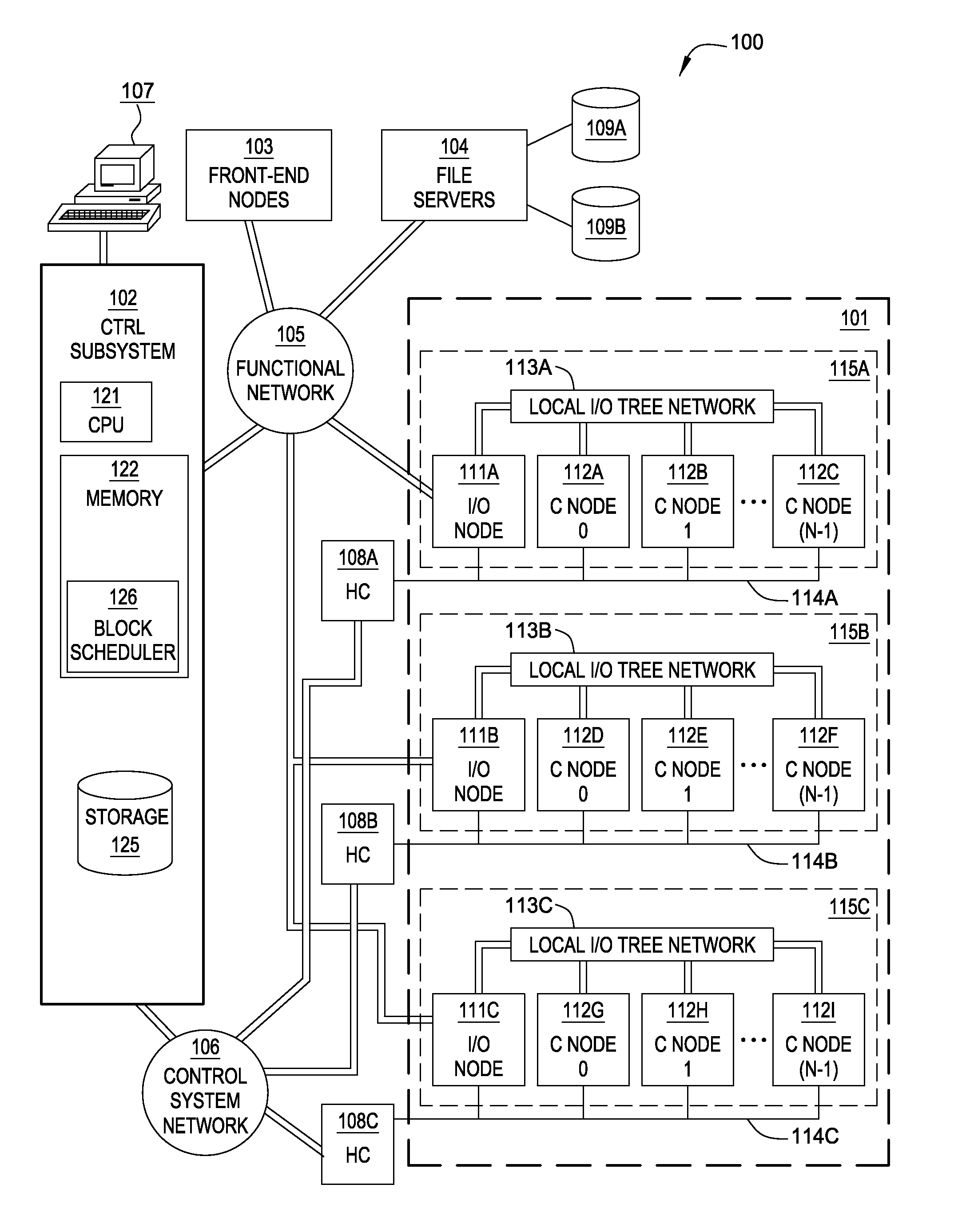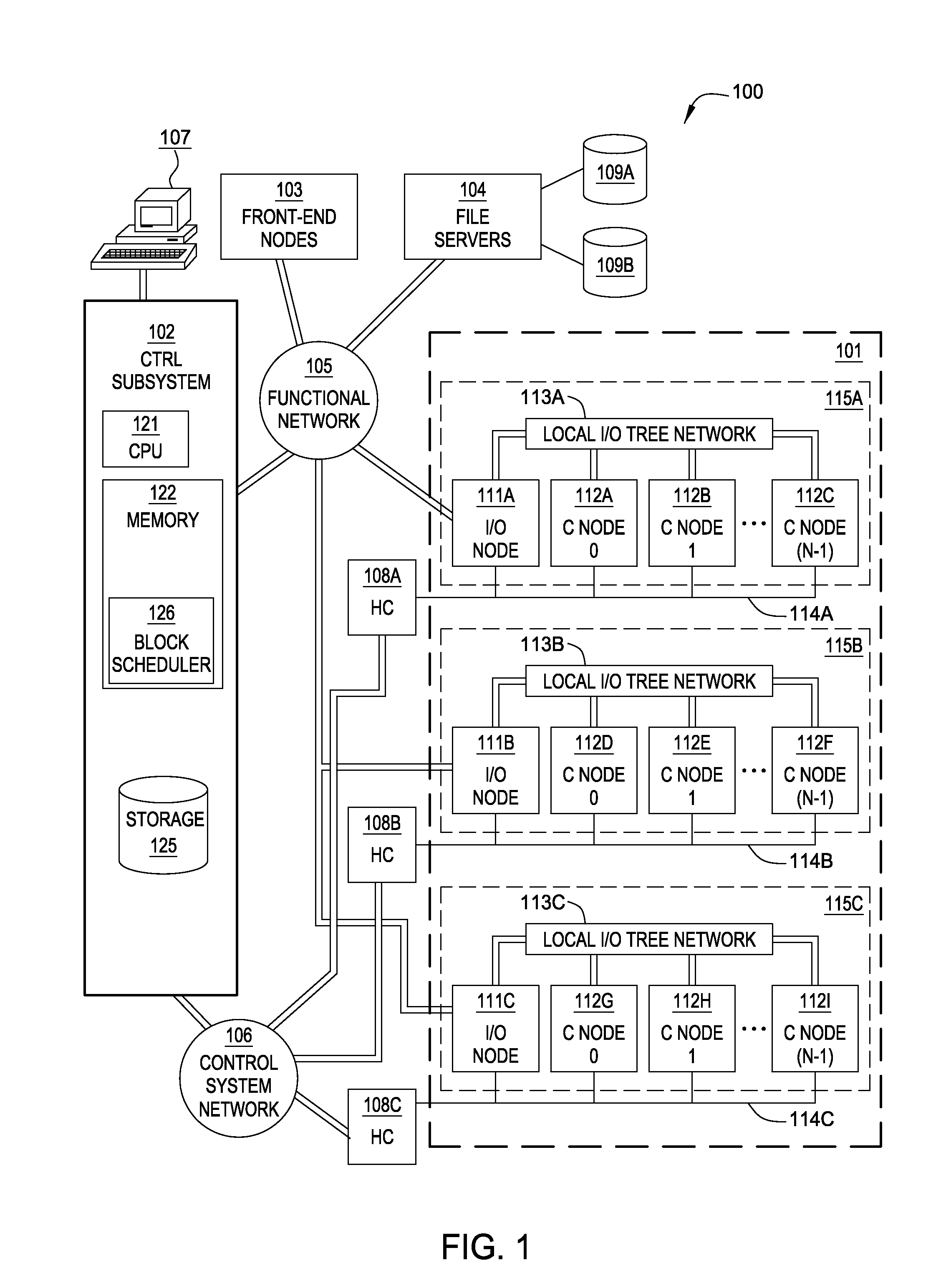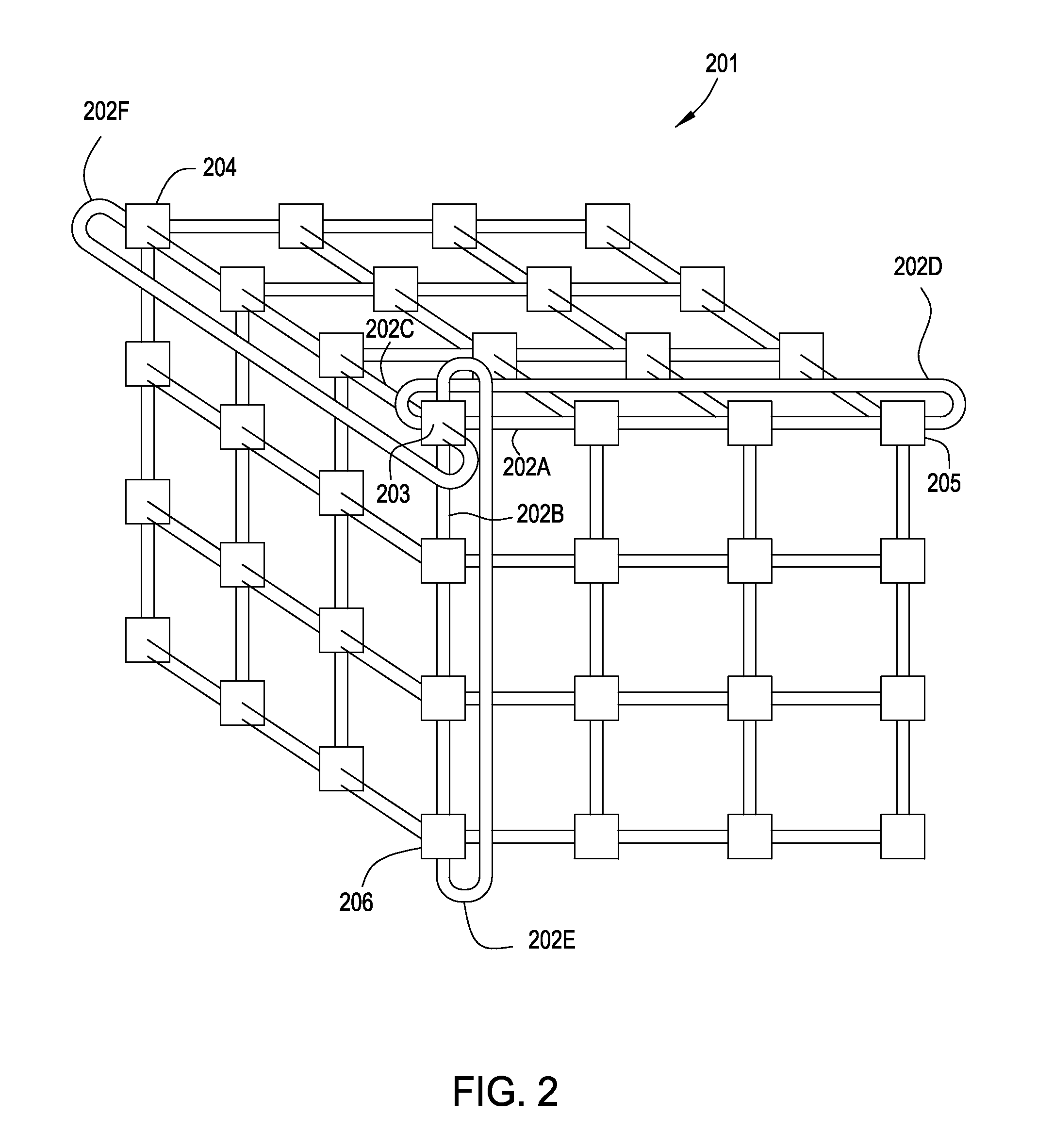Enhanced garbage collection in a multi-node environment
a garbage collection and multi-node technology, applied in the field of memory management using garbage collectors, can solve the problems of serious memory leakage and the overhead of running a garbage collector
- Summary
- Abstract
- Description
- Claims
- Application Information
AI Technical Summary
Benefits of technology
Problems solved by technology
Method used
Image
Examples
Embodiment Construction
[0019]Embodiments of the invention are generally directed to a method and apparatus for enhanced garbage collection in a multi-node environment. That is, embodiments of the invention are generally directed to a method for garbage collection on a parallel system having a plurality of compute nodes. Using a garbage collector in an environment with multiple compute nodes allows a more in-depth analysis to be performed than is possible on other systems. This is because the sheer number of compute nodes present in many parallel systems, and the connections between them, allows the overhead of doing advanced analysis to be spread across the nodes and the results of that analysis to be shared among the nodes. In one embodiment, using multiple nodes for garbage collection includes sharing duties among nodes, reducing overhead such that complex analyses may improve garbage collection efficiency.
[0020]In the following, reference is made to embodiments of the invention. However, it should be u...
PUM
 Login to View More
Login to View More Abstract
Description
Claims
Application Information
 Login to View More
Login to View More - R&D
- Intellectual Property
- Life Sciences
- Materials
- Tech Scout
- Unparalleled Data Quality
- Higher Quality Content
- 60% Fewer Hallucinations
Browse by: Latest US Patents, China's latest patents, Technical Efficacy Thesaurus, Application Domain, Technology Topic, Popular Technical Reports.
© 2025 PatSnap. All rights reserved.Legal|Privacy policy|Modern Slavery Act Transparency Statement|Sitemap|About US| Contact US: help@patsnap.com



